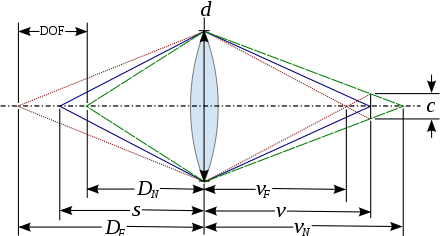In optics, particularly as it relates to film and photography, depth of field (DOF), also called focus range or effective focus range, is the distance between the nearest and farthest objects in a scene that appear acceptably sharp in an image. Although a lens can precisely focus at only one distance at a time, the decrease in sharpness is gradual on each side of the focused distance, so that within the DOF, the unsharpness is imperceptible under normal viewing conditions.
The zone of acceptable sharpness within a photo that will appear in focus will vary from photo to photo. Some images may have very small zones of focus which is called shallow depth of field. Others may have a very large zone of focus which is called deep depth of field. Three main factors that will affect how you control the depth of field of your images are: aperture (f-stop), distance from the subject to the camera, and focal length of the lens on your camera.



(The f-number of an optical system is the ratio of the lens’s focal length to the diameter of the entrance pupil).
As always, you can try using fxSolver, with the hyperfocal distance equation in our database.
Please, remember to follow our social media pages, by hitting the buttons below and watch the fxSolver video as well!
